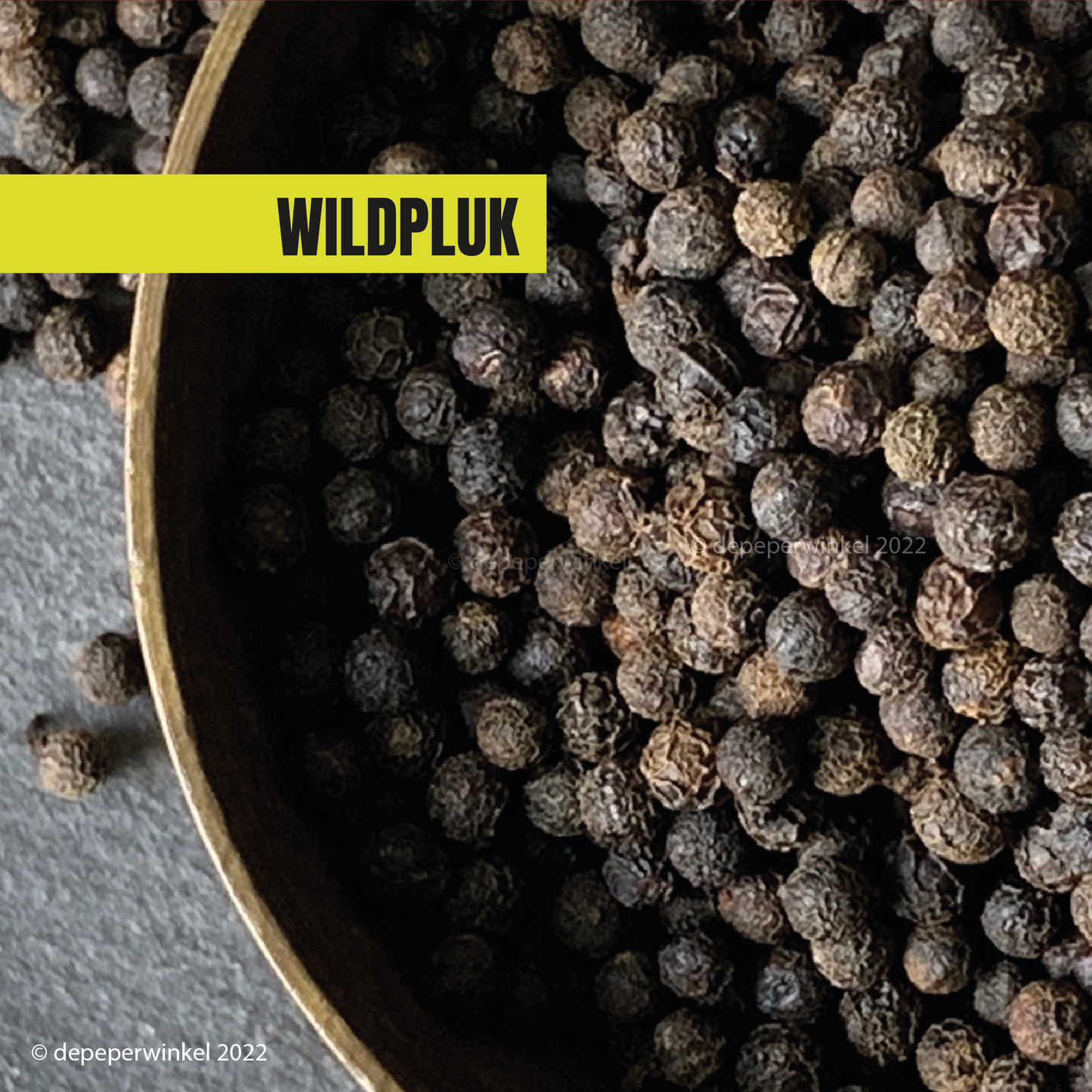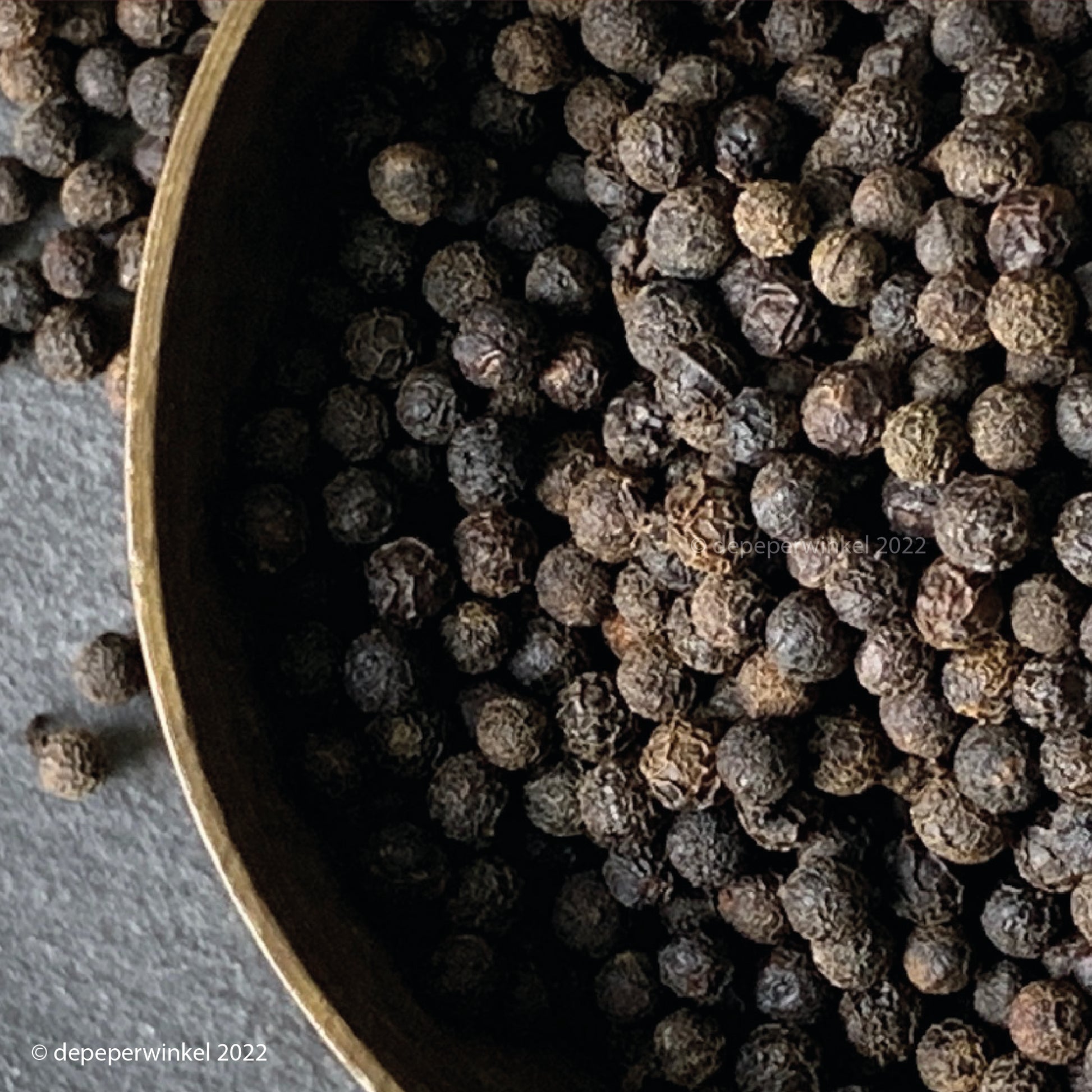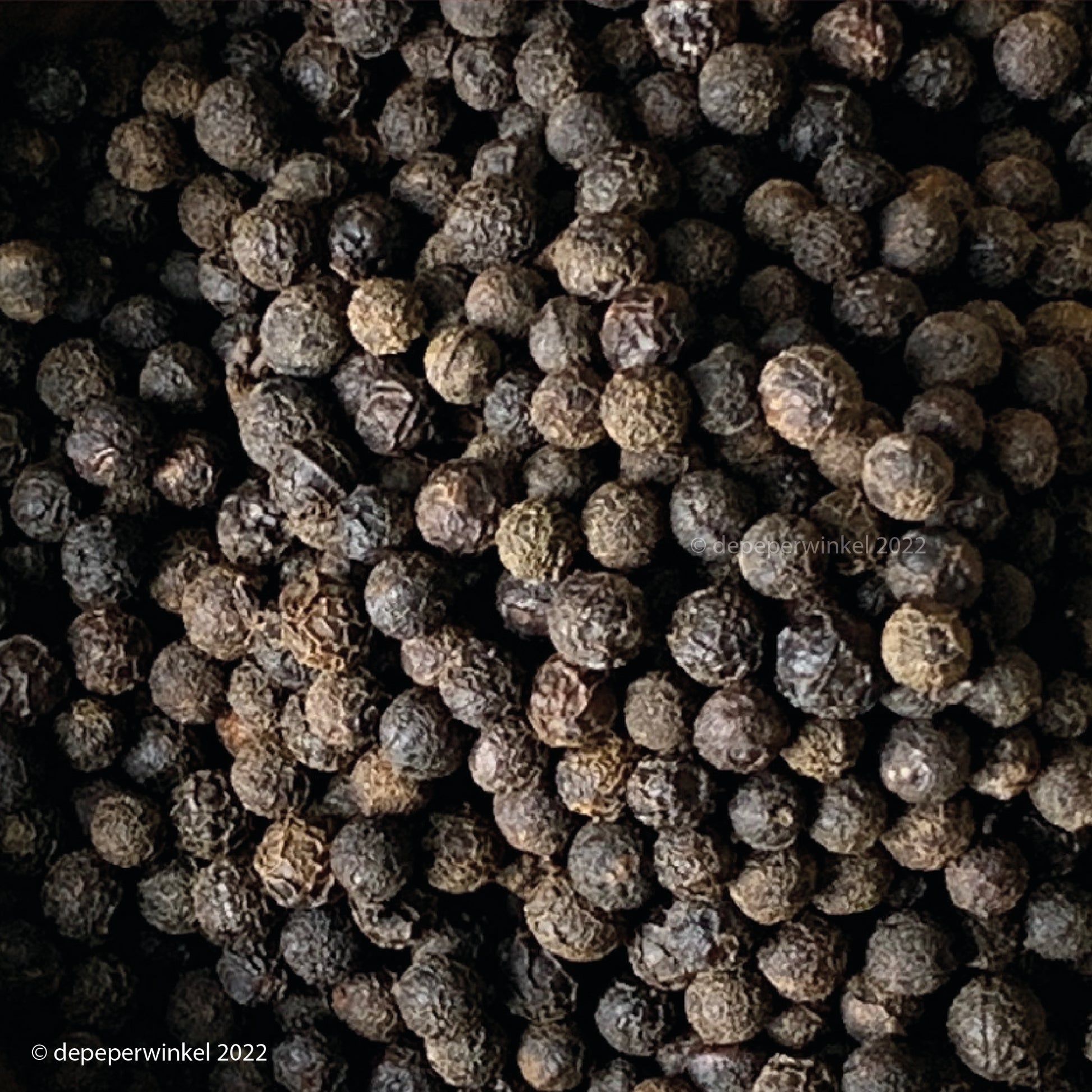depeperwinkel
Maqaw (magao) - pheasant pepper
Maqaw (magao) - pheasant pepper
Unable to load availability for pickup
The dried berry of the Litsea cubeba is sometimes called a pepper berry, but it is not, as it does not contain any sharp substance. Nevertheless, it is considered a pepper and has traditionally been used as such, which is why it has been included in the Ark of Taste by Slowfood.
This Litsea cubeba is also called the lemon pepper, not to be confused with the spice mix that is sold as a ready-made mix for fish dishes.
The Litsea cubeba is a 5-8 meter high tree or shrub with light yellow flowers. In the summer the 5 mm large fruits develop, which are picked or collected when ripe and dried. The red fruits then turn rust brown to black, just like pepper.
The name maqaw - 馬告 - comes from Taiwan, where the fruits have been used as a spice for thousands of years by the Atayal and the Saisyat, two indigenous peoples there. It means "brimming with vitality". It is sometimes called the 'black pearl'.
The maqaw grows at altitudes of 100 to 1,500 meters, in Taiwan, in the Himalayas in northern India, Thailand, Nepal and Vietnam, in southern China and on Borneo (Sarawak and Kalimantan), where the spice has just if it is a specialty in Taiwan.
Our maqaw does not come from Taiwan, but from Quảng Ngãi Province in Vietnam, where it is called sả rừng (lemongrass), and where in July it is used by the Hre and K'dong ethnic minorities in the mountainous districts of the province is picked. The common Vietnamese name is màng tang.
Smell and make
The berries are rich in essential oils, which provide a warm, pleasant smell and taste experience.
They look like pepperberries, but have a taste that includes hints of pepper, lemongrass, thyme, ginger and citrus fruits. The combination of citral, citronellal and citronellol provides the citrus notes, the alpha and beta pinene for a cedar flavor, and eucalyptus for a woody, light camphor flavor.
Although the taste palette is very similar to that of siltimur, the taste is clearly distinctive; in siltimur the cedar aroma in maqaw dominates the citruses. Overall, the taste is characterized as pleasantly peppery with lemongrass notes (see mbongo). The smell is like that of ginger root.
Chef Alex Peng of restaurant Akame once said about this in the Michelin Guide: "mix some white pepper with star anise and Sichuan pepper, and you have maqaw". These are the main essential oils in the fruit:
- citral, sweet citrus flavor from lemon peel
- citronellal, lime leaf (kafir), as in sereh and juniper berry
- citronellol, main component of sereh
- β-pinene, woody pine scent (cedar), as in cumin, pine, juniper and hemp,
- eucalyptol (cineol-1.8), spicy, mint flavor, as in sage and rosemary
- geraniol, rose scent
- safrole, sweet spicy with anise notes
Combines excellently with cardamom, bay leaf, mint, licorice, thyme, cinnamon and lemon. Try adding it to mayonnaise with fish !
Use
Use maqaw as a seasoning with red and white meat (pork for example), duck, fish or shellfish. Can also be used in desserts, cookies and in or in combination with chocolate. A few berries are enough for a delicious caffeine-free tea.
In Quảng Ngãi, snails are steamed with maqaw, instead of sereh, which is more common in Vietnam. Another specialty is a water buffalo stir-fry dish, with garlic, maqaw and a little bit of sugar.The thinly sliced water buffalo meat is rubbed with a rub of these spices, then stir-fried with some finely chopped onion and seasoned with black pepper and some salt.
Features:
- 100% berries of the Litsea cubeba,
- hand picked in the wild
- origin: Quảng Ngãi, Vietnam
Assortment
- available in glass, stand-up pouch and test tube
- glass jar contains 45 grams
- stand-up pouches with a capacity of up to 30 to 300 grams
- available in 10 ml test tube
- larger quantities on request
Gift packaging
- the jar is available in a tasteful gift packaging, consisting of a cube box filled with black tissue paper
- for an overview of our gift packaging, please refer to the gift packaging section
General advice
- maqaw is whole, bruised, used or ground.
- the taste can be dominant (citrus-slightly bitter), adjust the dosage accordingly
Save:
- store your kampot pepper in closed packaging
- preferably store in a dark, dry and cool place
- best before August 2025 (08/25)
- this expiration date is an indication
Would you like to know what maqaw tastes like?
Share













